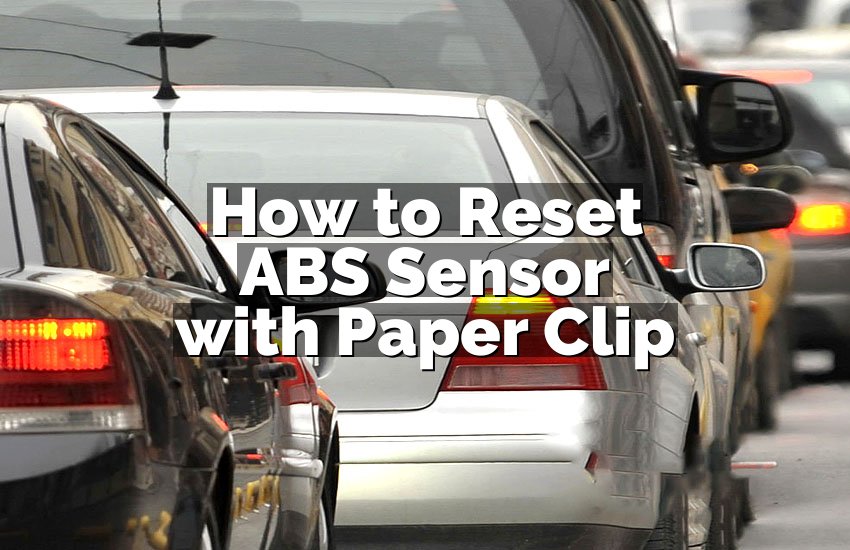You might wonder if it’s safe to use mineral spirits on your car’s paint. Maybe you’ve heard it can remove tough stains or old wax. But, is it really safe for the paint?
The answer is yes, but be careful. Mineral spirits can help remove stubborn stains or sticky stuff. However, use it gently and don’t rub too hard. Always wash the area with soap and water afterward. Remember, don’t use it too often, as it might harm the paint over time.
Your car’s paint is important, and using the wrong product could damage it. In this article, you’ll find out whether mineral spirits are safe for your car’s paint and when it’s okay to use them. You’ll also learn how to use them the right way, so your car stays looking great.

What are Mineral Spirits?
Mineral spirits are a type of liquid that can clean or thin paint. They are made from petroleum, which is the same stuff that gasoline comes from. People often use mineral spirits to remove tough stains, sticky substances, or old paint from surfaces.
They are clear and don’t have a strong smell, which makes them easier to work with than some other cleaners. If you’ve ever painted something, you might have used mineral spirits to clean your brushes. They help dissolve the paint so you can wash it off easily.
When it comes to cars, mineral spirits can help clean the paint surface. For example, if you have tar, grease, or tree sap stuck on your car, mineral spirits can break it down so you can wipe it off. But it’s important to be careful because mineral spirits are strong. If you use too much or rub too hard, you might damage the paint on your car.
So, while mineral spirits are useful, you have to use them the right way. Always test them on a small area first. This way, you can make sure they won’t hurt your car’s paint. In short, mineral spirits are handy for cleaning, but only when you’re careful.
How Mineral Spirits Affect Car Paint
Mineral spirits can have different effects on car paint, depending on how you use them. Let’s break it down simply.
First, mineral spirits are strong cleaners. They are great at removing tough stuff like tar, grease, or old wax. When you apply them to your car’s paint, they work by breaking down these stubborn things, making it easier to wipe them away. So, if you have sticky spots on your car that won’t come off with soap and water, mineral spirits might do the trick.
But here’s the catch: mineral spirits are powerful. That means they can be harsh on your car’s paint if you’re not careful. If you use too much or scrub too hard, you could take off more than just the dirt. You might remove the protective wax or even dull the paint. This is why it’s so important to use mineral spirits gently.
Also, different cars have different types of paint. Some paints are more sensitive than others. For example, if your car has a fresh coat of paint or a special finish, mineral spirits might be too harsh. They could make the paint lose its shine or even cause tiny scratches. That’s why it’s always a good idea to test a small, hidden area first. This way, you can see how the paint reacts before using mineral spirits on a bigger spot.
Another thing to keep in mind is that mineral spirits can leave a residue. After you use them, it’s important to wash the area with soap and water to get rid of any leftover cleaner. If you don’t, the residue could attract more dirt, or it might even make the paint feel sticky.
In some cases, mineral spirits can actually help protect your car’s paint. For example, if you need to remove old wax before applying a new coat, mineral spirits can help. By cleaning the surface thoroughly, they make sure the new wax sticks better, giving your car a smoother, shinier finish.
To sum it up, mineral spirits can be a useful tool for cleaning your car’s paint, but they need to be used with care. They can help remove tough spots, but they can also be too strong if not used properly. Always test first, use a small amount, and wash off any residue.
If you’re careful, mineral spirits can help keep your car looking clean and shiny. But if you’re not careful, they might do more harm than good. So, take your time, be gentle, and your car’s paint will thank you.
How to Safely Apply Mineral Spirits on Car Paint
Applying mineral spirits to your car’s paint can help clean tough spots, but it’s important to do it safely. Here’s how to use them without causing any damage.
Prepare the Car
Before you start, make sure your car is clean. Wash it with soap and water to remove any loose dirt. Dry it completely with a clean towel. This helps prevent scratching the paint while you work.
Test a Small Area
Always start by testing mineral spirits on a small, hidden area of your car. This is important because different paints react differently. Apply a tiny amount of mineral spirits to the test spot using a clean cloth. Wait a few minutes to see if there’s any change or damage. If the paint looks fine, you can continue. If not, look for another cleaning method.
Apply Mineral Spirits Carefully
When you’re ready, pour a small amount of mineral spirits onto a clean, soft cloth. Don’t pour too much—just enough to dampen the cloth. Gently rub the cloth over the dirty area. Don’t scrub too hard; just use a light touch. If the dirt doesn’t come off easily, don’t force it. You might need to apply a little more mineral spirits or try a different method.
Work in Small Sections
It’s best to work on one small section of your car at a time. This helps you keep track of where you’ve applied the mineral spirits and prevents the cleaner from drying out before you can wipe it off. After applying the mineral spirits, wipe the area with a clean, dry cloth to remove any residue.
Rinse and Dry
Once you’ve cleaned the area, rinse it with water. This step is important to remove any leftover mineral spirits. Use a hose or a bucket of water and a sponge to wash the area. After rinsing, dry it with a clean towel. This helps avoid water spots and ensures no residue is left behind.
Avoid Common Mistakes
Here are a few things to avoid when using mineral spirits:
- Don’t Use Too Much: Using too much can damage the paint or leave a sticky residue.
- Don’t Scrub Hard: Scrubbing too hard can scratch the paint.
- Don’t Leave It On: Always rinse off the mineral spirits to prevent damage.
- Don’t Use on Fresh Paint: If your car has fresh paint, wait before using mineral spirits. It can damage new paint.
Clean Up Afterward
After you finish cleaning, make sure to wash your hands and any tools you used. Mineral spirits can be harmful if they come into contact with your skin or are inhaled. Use soap and water to clean your hands, and dispose of any used cloths properly.
When to Seek Help
If you’re unsure or worried about using mineral spirits, it might be a good idea to get professional help. Sometimes it’s best to have a car detailer handle the cleaning, especially if you’re dealing with a sensitive or expensive paint job.
Using mineral spirits safely can keep your car looking great, but it’s important to follow these steps carefully. Always test first, apply gently, and make sure to rinse and dry thoroughly. This way, you can avoid damage and get the clean results you want.

When to Use Mineral Spirits on Car Paint
Mineral spirits can be helpful for your car paint, but you need to use them at the right times. They are best for cleaning up things like sticky residue or old, stubborn spots. For example, if you have tar or tree sap on your car, mineral spirits can help remove it.
You should use mineral spirits when the dirt or stain is tough to clean with regular soap and water. They work well to break down these hard-to-remove substances. But you need to be careful with them. They are strong and can damage your paint if not used correctly.
Before using mineral spirits, always test them on a small, hidden spot first. This way, you can make sure they don’t harm your car’s paint. Apply a small amount to the test area and see if it causes any damage or changes the color. If everything looks good, you can use it on the rest of the problem areas.
Avoid using mineral spirits on new paint or freshly painted areas. It’s better to stick to gentle cleaners for these surfaces. Also, don’t use them too often. Regular cleaning with soap and water is usually enough for everyday dirt. Save mineral spirits for those stubborn spots that need a little extra help.
In short, use mineral spirits for tough stains or residue, but be careful and test first to protect your car’s paint.
Alternatives to Mineral Spirits for Car Paint
If you’re looking for other ways to clean your car’s paint instead of using mineral spirits, there are some great alternatives. These options can help you keep your car clean without risking damage to the paint.
Soap and Water
Soap and water are often the safest way to clean your car. It’s easy and works well for most dirt and grime.
How to Use:
- Start by mixing a mild car wash soap with water in a bucket.
- Use a soft sponge or wash mitt to apply the soapy water to your car.
- Gently scrub the surface to lift off the dirt.
- Rinse with clean water to remove all soap.
- Dry your car with a clean towel to avoid water spots.
Detailing Clay
Detailing clay is a special clay that can help remove contaminants like road tar and tree sap. It’s effective but gentle on your car’s paint.
How to Use:
- First, you need to wet the car’s surface and the clay with a clay lubricant.
- Take a small piece of the clay and rub it gently over the car’s surface in a back-and-forth motion.
- Work in small sections to ensure the whole surface is covered.
- After using the clay, wipe off any leftover lubricant with a clean cloth.
Car Cleaning Wipes
Car cleaning wipes are a quick and easy option. They are pre-moistened and safe for your car’s paint.
How to Use:
- Simply pull out a cleaning wipe from the package.
- Wipe the surface of your car to remove dirt and grime.
- Follow up with a clean, dry cloth to remove any remaining moisture.
Degreaser
If you need to remove oil, grease, or heavy dirt, a car-safe degreaser can help. It’s important to choose a degreaser that’s meant for automotive use.
How to Use:
- Spray the degreaser directly onto the affected area of your car.
- Let it sit for a few minutes to break down the grease.
- Wipe off the degreaser with a clean cloth.
- Rinse the area with water to remove any residue.
Isopropyl Alcohol
Isopropyl alcohol can help clean your car and remove residues. It’s a good choice for preparing the surface before waxing or sealing.
How to Use:
- Mix isopropyl alcohol with water. A good ratio is about 1 part alcohol to 2 parts water.
- Apply the mixture with a clean cloth to the car’s surface.
- Wipe the area gently and make sure to follow up with a dry cloth.
Vinegar Solution
A mixture of vinegar and water is another natural option for light cleaning. It’s good for removing mineral deposits and is safe for most paints.
How to Use:
- Mix equal parts of vinegar and water in a spray bottle.
- Spray the solution onto the surface of your car.
- Use a sponge or cloth to clean the area.
- Rinse the surface with water to remove any vinegar residue.
- Dry with a clean towel.
Each of these alternatives is effective for different cleaning tasks. Soap and water are great for regular washing, while detailing clay is perfect for removing stuck-on contaminants.
Car cleaning wipes and degreasers are handy for quick fixes, and isopropyl alcohol and vinegar solutions are good for specific problems. Choose the method that works best for your needs and always test in a small area first to make sure it’s safe for your car’s paint.
I hope this helps you understand if mineral spirits are safe for your car paint. Always test on a small area first and use it carefully. If you’re unsure, it might be best to ask a professional or use products made specifically for car paint. Keep your car looking great and protected!


